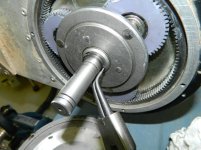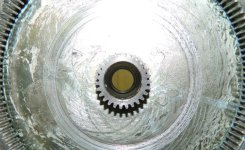crossbreak
1 MW
Sounds like a moot point but this was bugging me trying to figure out what was with the lag time.
Did you set your controller for fast throttle response? I had this issue a lot when using softstart ramping BMSbattery controllers (KU123). Got a lot better with a Greentime 15Fet. Still it does not feel like a direct drive. My solution would be:
Use a torque throttle, always apply a little throttle to keep the chain rolling. Does't consume much energy. When using an Arduino, there could be a "sport mode" and an "eco mode" with this function disabled. Already wrote that on my list a year ago. Yet we are still working on the BMS register reads and did not have much time for throttle logic. The BMS story is almost done, my friend will write an Android interface for displaying cell voltages, battery cycles, total AH charged and discharged etc... after that, I'll try to write a program that exactly does the above described.





